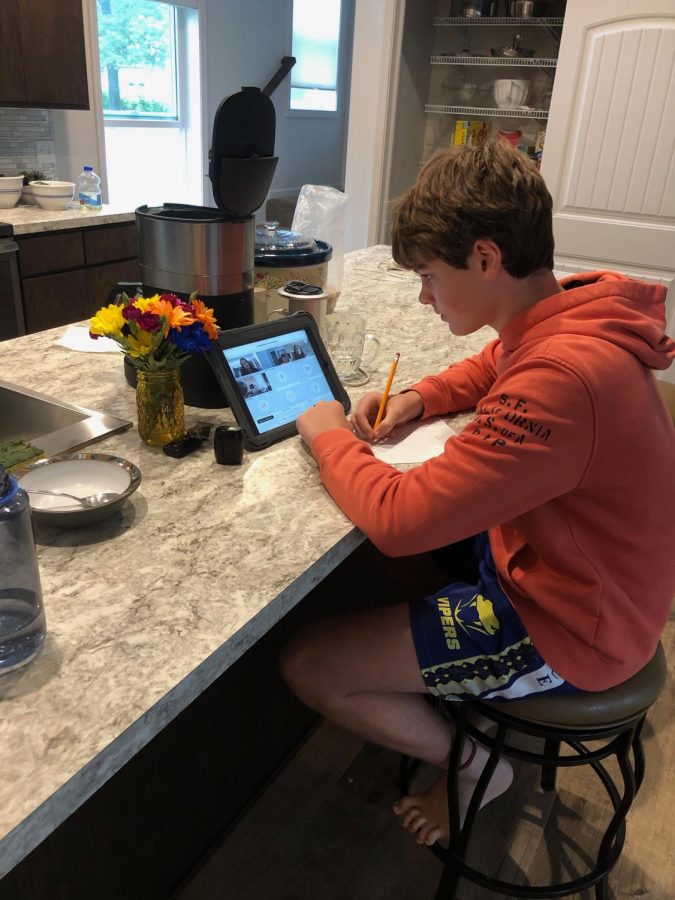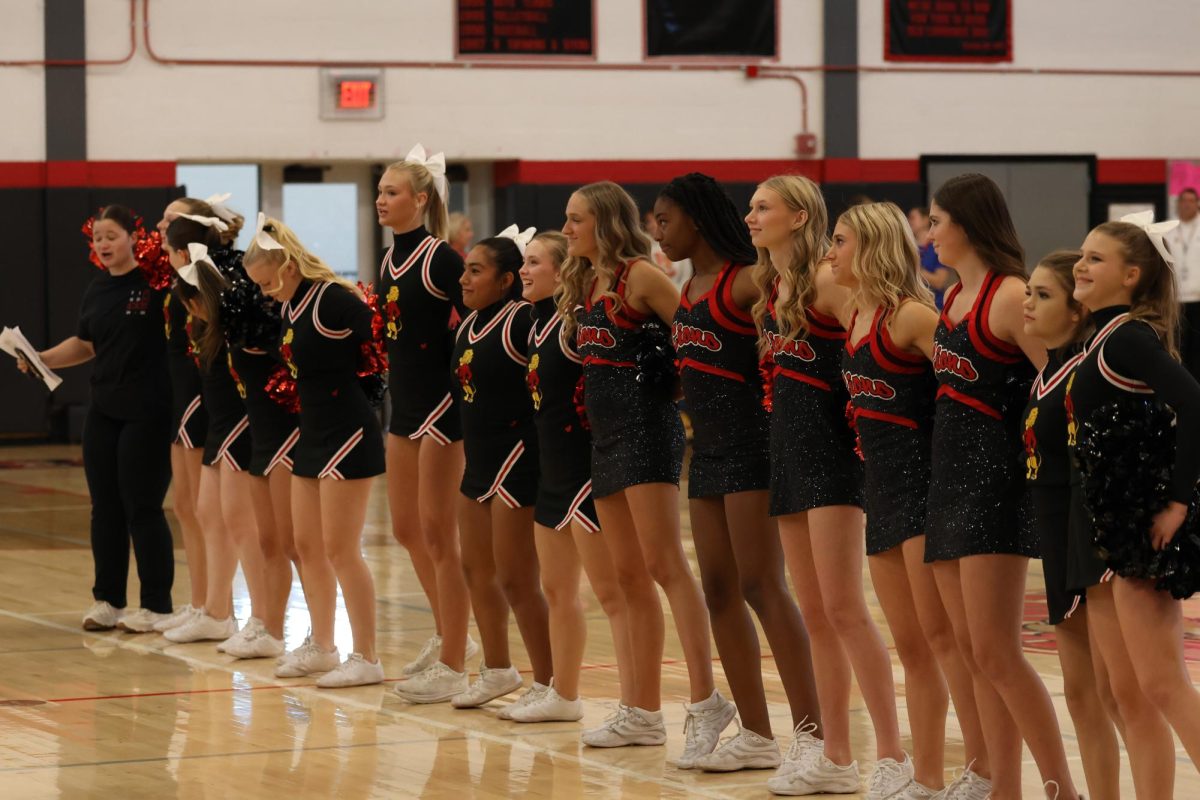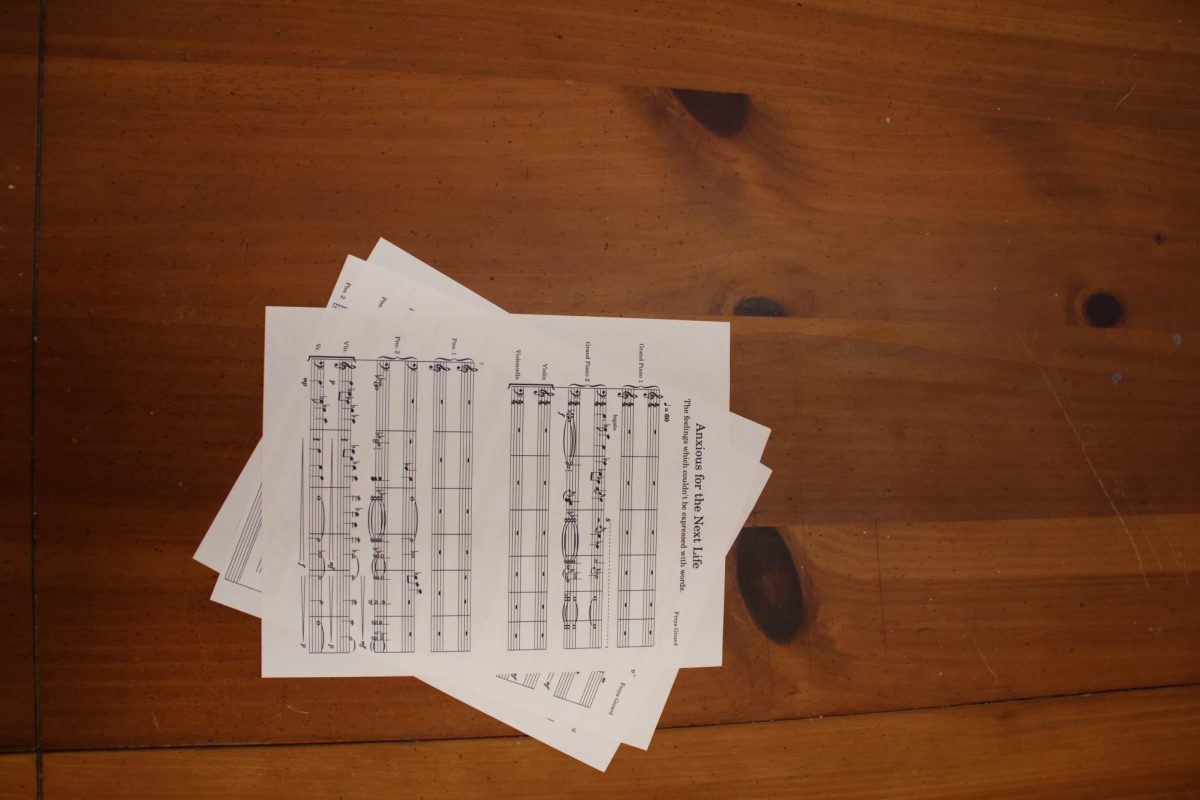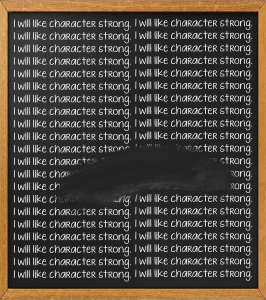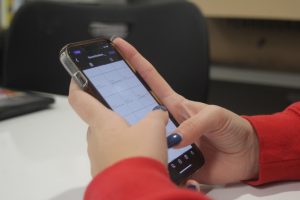Students’ at-home learning spaces evolve over pandemic
Freshman Samuel Cohen takes notes during online class in his kitchen. Students learn from home because of the ongoing coronavirus pandemic
February 22, 2021
At-home learning spaces for students have dramatically changed since the initial closings of school for remote learning to the district’s push to have students turn on their cameras.
Many students organized their learning spaces in ways that best suited them to access their online classes. Senior Anis Abughalia, like most other students, planned to create his space within his own bedroom.
“I’ve turned my desk in my room into a sort of hub with all my school work,” Abughalia said. “I have outlets all over the room as well, allowing for things like desk, lamps and stuff.”
However, a bedroom setting comes with many distractions. Some students, like senior Abby Lingwall, combatted these distractions to allow them to focus in school in creative ways.
“I try to keep my phone across the room to limit distractions and also I have plenty of colorful pens and highlighters to make doing school work more fun,” Lingwall said.
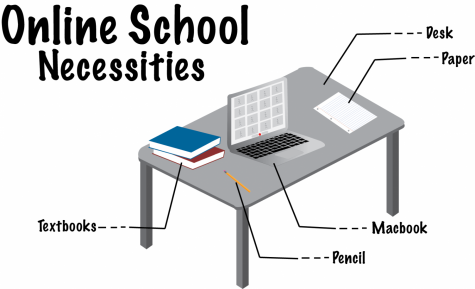
Recently, the district moved to push for students to turn on cameras. Students beforehand struggled to turn their cameras on, and a requirement to keep them on may present a change in how students present themselves and their learning spaces in class.
“Right now I like having the choice whether to have my camera on, but I understand it’s difficult for teachers to talk to a gray screen all day,” Lingwall said. “Having my camera on also helps to hold me accountable that I’m actually doing work in class.”
Teachers have taken flexible approaches to enforcing cameras.
“I understand that students have such differing home lives, so I really don’t have any set expectations,” English teacher Melissa Johnson said. “I’d call them ‘hopes’ instead. I hope they’re able to have a quiet space, with reliable internet access. Even more so, I hope it’s a place where they feel safe and happy and ready to learn. But I know that can’t be true for everyone.”
While D’s and F’s are up overall, some students perform academically much better at home instead of school, such as senior Reece Wohlford.
“I failed a class last year and barely scraped by in a lot of them,” Wohlford said. “This year, I have all A’s and I’m 100 percent certain it’s because I don’t have my friends around to distract me, because I’d much rather hang back with them in class and talk rather than pay attention. This time, I’ve really got to work and my grades definitely improved.”
Students have virtual spaces to consider as well as their real spaces. Lingwall organizes her computer in ways that make classes more accessible for her.
“I have separate folders on my desktop to keep my different classes and my personal things apart.”
Learning from home does present challenges of not getting bored. Students confront this by keeping themselves entertained through interesting ways.
“I like that I can walk around during passing periods or even during class when it’s work time,” Wohlford said. “I can go outside or say hi to my mom because she also works at home, it’s just nice to have more freedom.”
Abughalia goes to musical lengths to keep himself entertained in his at-home learning spaces.
“I keep my guitar on a stand next to my desk, and I’ll usually pick it up and play between passing periods or when I finish any in class work,” Abughalia said.
Regardless of how alike student goals can be academically, at-home learning spaces will always vary between what the students need and what teachers expect from them.
“I just hope students are doing what they can to engage,” Johnson said. “Above all, I hope students are present when they’re in my class. They’re at home, but school is a chance for routine and structure, which I personally find very comforting in these times.”



